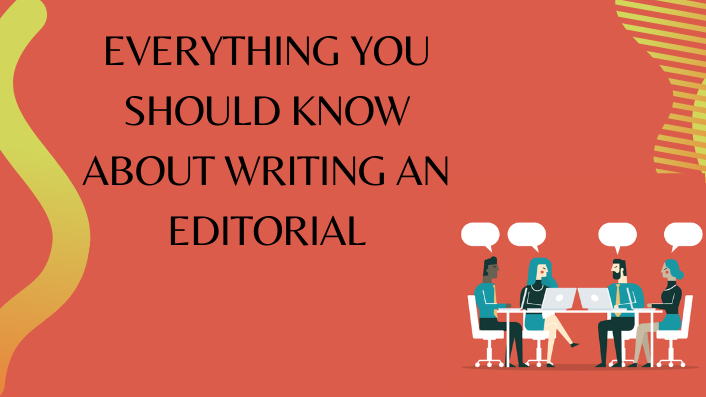Writing an editorial is an excellent way to communicate your viewpoint or advocate for a cause to a large audience. Useful editorial articles can increase public awareness of a problem while also affecting other people’s views on the subject. Knowing how to write an effective editorial will help you get your point across, spark debate in your community, or take a stand on behalf of a group. We’ll go over what an editorial is, how to write one, and how to make a good one in this article and get macroeconomics assignment help.
What is editorial?
An editorial is a short piece of writing that expresses one person’s viewpoint on a current event or social issue. A good editorial aims to convince the reader to think about your perspective and change their minds. Editorials often address contentious issues from opposing perspectives.
Professors assign editorials in class to assess your persuasive writing skills. Simultaneously, journalists and editors at newspapers and magazines write editorials to make a point or generate conversation about their publications. Your editorial should make a strong case that represents your viewpoint and appeals to your target audience.
How to write an editorial
You can begin the writing process once you’ve decided on the type of editorial you want to write and the basic elements you’ll need to include. Refer to the prompt regularly during the planning process if you’re writing an editorial for a class or work assignment. An editorial with specific classroom rules will almost certainly vary significantly from an opinion piece in a magazine or newspaper.
Keep in mind that your subject should be unique as you choose what to write about. Maintaining your editorial’s focus on a single aspect of an issue will help the reader remain focused on your argument. A well-written editorial devotes several paragraphs to defending a single point and gets dissertation assignment help.
- Decide you topic
A writer for a school newspaper, for example, may decide to write an editorial about the new school dress’ code. A writer can generate a call-to-action by focusing on this one topical issue rather than criticizing anything they don’t like about school. Regardless of whether their readers agree or disagree with the dress’ code, an editorial on a contentious subject would compel others to participate.
2. Research your topic
Even if an editorial is purely subjective, it is still necessary to provide well-researched evidence to back up your claims. Demonstrate knowledge of what other influential voices have to say on the subject to persuade your readers of your reputation. Researching your subject will also help you decide which side you’ll take and write an article that adds to the conversation with new ideas.
3. Create an Outline
After you’ve chosen and researched an issue, outline to keep your thoughts organized and ensure that your editorial’s main points flow smoothly, the introduction and conclusion will always be at the beginning and end of the essay. Still, you can arrange your body paragraphs in any order that best suits your essay.
4. Start to write
After you’ve completed your editorial planning phase, begin writing by adding details to your outline. Some people prefer to begin with the introduction, while others prefer to begin with the paper’s body and finish with the introduction. At first, try to jot down as many ideas as possible, then go back and edit your paper.
5. Proofread
Proofread your work before submitting it to ensure that it is a professional, high-quality piece of writing. To check for tone and flow, many authors read their work aloud. Another popular proofreading method is to read your paper backward, starting with the last sentence and working your way to the beginning.
This procedure assists in detecting spelling and grammatical errors that you may have missed the first time around. Consider having a trusted friend or colleague read your paper and summarise the main points for clarity.
Tips for writing a good editorial
Any topic can be the subject of a good editorial as long as you can make a compelling case for your viewpoint and write with your audience in mind. Focus on why a reader might be interested in your subject, as well as why someone may disagree. Understanding both sides of an issue will help you write an editorial that appeals to a wide range of readers.
- Be Decisive
Your editorial should take a strong stance on the subject you’ve chosen. When you bring up an opposing viewpoint, explain why it is wrong and why readers should instead agree. Demonstrate trust in your position to persuade readers to consider your ideas.
2. Offer the ideas
Check to see if there are any aspects of your problem that others have not yet addressed during your study. While everyone may have an opinion, adding something new to a debate demonstrates that you have given your piece careful thought.
3. Provide Solutions
Suppose you’re writing an editorial about a problem, including some possible solutions. You want to avoid just whining so that your audience sees the value in what you’re doing and considers taking action.
4. Focus on your interests
Select a subject about which you are passionate whenever possible. Your writing will reflect your genuine interest in the subject, making your paper more engaging to read and more important to readers.
Conclusion
An editorial piece is more than just spouting off your opinions on a subject and expecting others to agree with you. Explain the problem, criticize recent decisions or actions, convince readers to agree with your perspective, and offer solutions in your article. An editorial in a newspaper should be reasoned, not ranting. It also shouldn’t be too long.



